Most Popular Trading Strategies for Every Type of Trader
8 mins read • Last Updated: 13 Nov 2023
Having a trading plan is essential for success in trading. Without one, you are likely to get lost in the markets, make poor decisions, and you could end up losing your money.
Fortunately, various methods are used to establish and develop a trading strategy, each with high potential rewards and risks ingrained in the strategy.
Here, we will cover four of the most common trading strategies and other successful trading techniques. We will also show you how these strategies work and how to start using them.
What is a Trading Strategy?
A trading strategy is a fixed trading plan with a set of rules to help a trader determine how to maximize profits and minimize risk in financial markets. Each strategy determines the frequency of trades, the entry and exit levels, the risk and the profit target, and the traders' methods of analyzing the market.
As for the analysis method - a trading strategy can be based on fundamental, technical analysis, or a combination of both. They are also categorized into two major types - long-term and short-term strategies. Short-term trading strategies include scalping, day trading, and swing trading, while long-term trading strategies include position trading.
So, for instance, a trader can utilize the scalping trading strategy using the moving average indicator and news trading. Using this strategy, a trader aims to capture profits from short-term fluctuations.
However, a trader can also apply the position trading strategy using fundamental analysis and other long-term investing strategies. The goal of position trading is to capture long-term gains over weeks, months, or years rather than days. In short, there are so many different options to choose from.
But, a key thing to remember is that all trading strategies have one thing in common, which is to maximize profits and minimize losses.
4 Trading Strategies Every Trader Should Know
There are various ways to trade FX currency pairs and other financial assets. Therefore, choosing the strategy that suits your personality is crucial for your success. So, check out these four trading strategy guides and select the best one for you.

Scalping Strategy
Scalping Strategy
Scalping is one of the best forex trading strategies and is the shortest-term trading method of all, where traders exploit small price changes to make quick profits. Its main characteristic is the super short time between a trade's opening and closing time and the large number of transactions made by scalpers daily.
Scalpers only hold onto their scalping trades for a few seconds or, at most, a few minutes. They are not attached to any position, have a neutral market outlook, and their only goal is to have a positive win/loss ratio by the end of the day/week/month. They are.. Pips collectors.

Day Trading Strategy
Day Trading Strategy
Day trading is a popular short-term trading style where traders open and close trades on the same day, intending to profit from small price movements. Typically, day traders focus on several assets to trade on during the day, getting in and out of positions routinely and trying to take advantage of small price changes. Finally, they close all positions by the end of the day and finish the day with either a profit or a loss.
Day trading forex is suited for forex traders with enough time throughout the day to analyze, execute and monitor their trade. It is a full-time job that might be extremely rewarding and, at the same time, challenging and demanding.

Swing Trading Strategy
Swing Trading Strategy
Swing trading, also known as a momentum or trend trading strategy, is a short-term strategy for a trader to buy or sell financial instruments using technical analysis tools that suggest an impending price movement. The swing trading strategy type can span any length of time, ranging from days to weeks, although most swing traders hold their positions for a period of two-five days.

Position Trading Strategy
Position Trading Strategy
Position trading is a long-term trading strategy where traders hold onto positions for weeks, months, or even years. This approach focuses on identifying and capitalizing on larger market trends and involves analyzing a range of factors, such as economic and political developments, market sentiment, and technical indicators.
Position traders use fundamental and technical analysis to identify potential opportunities and risks and may use a variety of tools, including charts and graphs, to track their positions. The goal of position trading is to capture larger price movements over an extended period, and it can be particularly beneficial for investors seeking to build wealth over the long term.
Ready to Take Charge of Your Trading?
Choosing the right trading strategy is quite a daunting and time-consuming task, especially when you risk your capital. But it is a step you cannot skip. A good trading strategy can make or break a trading account. So, to optimize the chances of your trading success, you need to find a strategy that suits you. And we can help you get there!
Visit our Learning Hub and with the support and guidance of our trading analysts, you can find the perfect trading strategy and start successfully trading the financial markets.

Frequently Asked Questions
Here you can find the most commonly asked questions about trading strategies.
How should I choose a trading strategy?
Choosing a trading strategy is an essential step in your trading career. Before you choose a trading strategy, you must ask yourself how much time you can dedicate to trading, what’s your risk tolerance, and which strategy seems to suit your personality perfectly.
Still, you must try different strategies before knowing exactly what is best for you. Developing trading strategies that work for you might take weeks, months, or even years. It’s a trial and error process that can be daunting, but at the same time, one that can help you learn a lot about your personality and goals.
What is the most effective trading strategy?
There’s no one most effective trading strategy. It’s subjective to every person, as each trading strategy is suited for different personalities and market scenarios. No one can say that there’s no one trading strategy that is better than the other.
For instance, if you have a full-time job and cannot dedicate yourself to trading, you may want to use the swing or position trading strategy. Otherwise, scalp and day trading could be ideal for you if you have the time to analyze the market and monitor the screens throughout the day. One thing is for sure - every trading strategy can be effective and profitable.
How can I learn and backtest a trading strategy?
Testing a strategy before you trade the real live markets is an essential step you need to take. If you want to know if you’ve chosen the right strategy that works for you, you first need to backtest your trading strategy over several weeks or months. The ideal way to do that is to open a demonstration account, choose a strategy, and backtest it for a while. Additionally, using resources that can help you form a trading strategy is advisable. Some of these include trading tools, cheat sheets, and technical indicators.
What is the easiest trading strategy?
Generally, every trading strategy can be simple or complex. While some traders prefer working with technical indicators and statistical data, others feel more comfortable with the naked trading strategy, which refers to trading with a clean chart without any indicators and drawings to simplify trading.
But, in the forex and the stock market - long-term investing requires much more capital than short-term trading strategies. Also, due to the nature of financial markets, long-trend investing can be risky compared to short-term investing. Therefore, we believe that short-term trading strategies are not necessarily the easiest, but they will likely be more profitable in the long run.
What type of trading is the safest?
Well, opinions vary regarding this topic. Many people believe that long-term investing is the safest way. Indeed, investing in dividend stocks and fixed-income securities is the safest approach since market volatility is not a factor, and you should not struggle with risk management. However, when it comes to trading, many believe that intraday trading is the safest form of trading as it minimizes the risk of exposure to a single trade. Unlike long-term investment strategies, when you scalp or day trade, every day is a new day, and you can essentially develop a consistent, successful, safe strategy.


